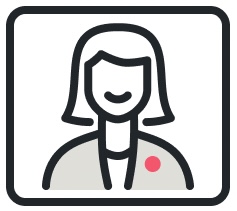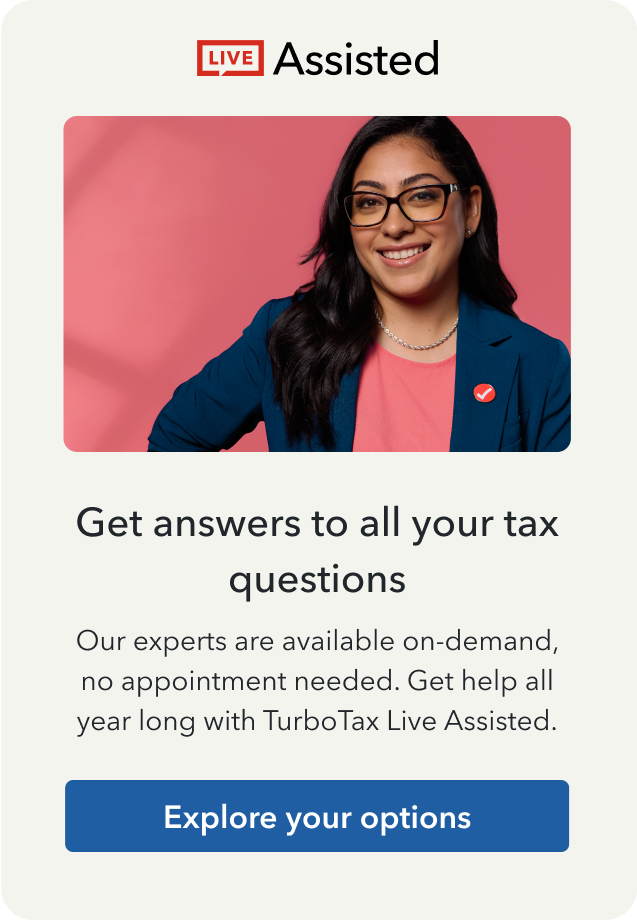- Community
- Topics
- Community
- :
- Discussions
- :
- Taxes
- :
- [Event] Ask the Experts: Navigating Retirement Taxes
- :
- New retiree with questions about SS taxes
- Mark as New
- Bookmark
- Subscribe
- Subscribe to RSS Feed
- Permalink
- Report Inappropriate Content
New retiree with questions about SS taxes
Background: I worked through Sept. of this year and have now retired. My first SS retirement payment was generated 9/30 and showed up in my bank account 10/1. The payment amount included six months of retroactive payments (March thru Aug. 2025, going back to when I reached Full Retirement Age), plus the payment for Sept. My wife will continue working for a few more years, and we file our tax returns jointly.
Questions: Will I need to do a quarterly estimate and payment of taxes going forward, or can I just report my SS income on our annual April returns? If I’ve read correctly, I can just report it yearly so long as my expected tax shortage for the year (Line 24 “total tax” minus Line 33 “total payments” on the 1040-SR) is less than $1000, or if Line 33 divided by Line 24 on Form 1040-SR is at least .90. Is that right?
In our case the 2024 return may not be the best point of comparison, since we drastically adjusted our voluntary withholding amount this year. So, let’s say that I do in fact have to start estimating and paying quarterly. When will my first payment be due? (See dates at the top.) Would I make multiple initial payments, since the benefit period, counting the retroactive payments, spans several quarters?

Do you have an Intuit account?
You'll need to sign in or create an account to connect with an expert.
- Mark as New
- Bookmark
- Subscribe
- Subscribe to RSS Feed
- Permalink
- Report Inappropriate Content
New retiree with questions about SS taxes
You are correct that you will report all the SS benefits on the personal return that you file jointly each year. You will receive 1099-SSA from SS admin each year that will have gross and net benefits paid along with Medicare premiums and any tax withholding. Generally SS admin do not withhold taxes so you will have to let them know to withhold taxes. You can do that here.
https://www.ssa.gov/manage-benefits/request-withhold-taxes
Alternatively you can also pay directly to the IRS on their website or send them a check each quarter. Estimated payments are due listed here.
https://www.irs.gov/faqs/estimated-tax/individuals/individuals-2
You do not need to make multiple payments, you can use the IRS estimated worksheet or TurboTax tax calculator to estimate balance due and pay the full amount if you are ok or you can break them and make smaller payments.
Here is a link to IRS 1040-ES form with instructions.
https://www.irs.gov/pub/irs-pdf/f1040es.pdf
https://turbotax.intuit.com/tax-tools/calculators/taxcaster/
You may avoid the Underpayment of Estimated Tax by Individuals Penalty if:
- Your filed tax return shows you owe less than $1,000 or
- You paid at least 90% of the tax shown on the return for the taxable year or 100% of the tax shown on the return for the prior year, whichever amount is less.
Thanks for participating in TurboTax's Ask the Expert event today. I hope this information was helpful!
**Please cheer or say thanks by clicking the thumb icon in a post
**Mark the post that answers your question by clicking on "Mark as Best Answer"
Regards,
TurboTax Expert
- Mark as New
- Bookmark
- Subscribe
- Subscribe to RSS Feed
- Permalink
- Report Inappropriate Content
New retiree with questions about SS taxes
Regarding your last comment about avoiding the penalty if my tax return shows that I owe less than $1000, I'm having trouble squaring that statement with what I see at the top of the https://www.irs.gov/faqs/estimated-tax/individuals/individuals-2 page that you provided, where it says: " If you don't pay enough tax by the due date of each payment period, you may be charged a penalty even if you're due a refund when you file your income tax return at the end of the year." Can you resolve this seeming contradiction?
- Mark as New
- Bookmark
- Subscribe
- Subscribe to RSS Feed
- Permalink
- Report Inappropriate Content
New retiree with questions about SS taxes
If you do not pay in enough tax from withholding and estimates, you may have to pay a penalty for underpayment of estimated tax. The penalty is an Estimated amount. Even if you are getting a refund you can still owe a penalty for not paying in evenly during the year. Generally, most taxpayers will avoid this penalty if they owe less than $1,000 in tax after subtracting their withholdings and credits, or if they paid at least 90% of the tax for the current year, or 100% of the tax shown on the return for the prior year, whichever is smaller. It is included in your tax due or reduces your refund.
If you get a penalty on 1040 line 38, you might be able to eliminate it or at least reduce it. You can go to Federal Taxes tab or Personal tab, under Other Tax Situations and select Start by the Underpayment Penalties. You will answer a series of questions that may reduce or eliminate the penalty. Or you can elect to have the IRS figure the penalty for you. It's form 2210.
It's under
Federal tab or Personal (for Home & Business Desktop)
Other Tax Situations
Additional Tax Payments
Underpayment Penalties - Click the Start or update button
IRS Form 2210
https://www.irs.gov/pub/irs-pdf/f2210.pdf
IRS Form 2210 Instructions
https://www.irs.gov/pub/irs-pdf/i2210.pdf
Still have questions?
Questions are answered within a few hours on average.
Post a Question*Must create login to post
Unlock tailored help options in your account.
Get more help
Ask questions and learn more about your taxes and finances.
Related Content

sockfight-1
Returning Member

Dawn20
Level 2

LeoDude
Level 1

Irsagain
Level 1

jimdebmt
New Member

